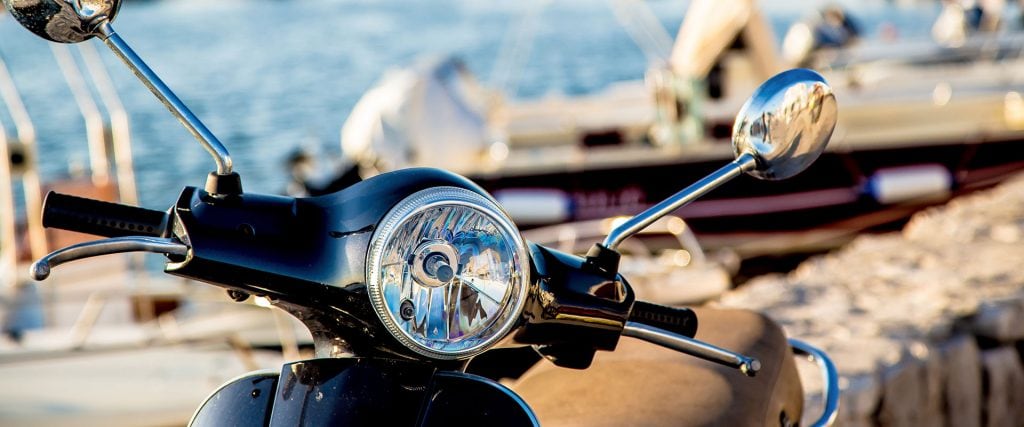03 Oct What Engine Size and Type of Scooter Should I Buy?

Choosing a scooter isn’t just about looks or price, the size of the engine matters too. In Australia, Mopeds fall under a very specific category. Before deciding which scooter is right for you, it’s worth knowing the legal definition and the main engine types available.
What Size Engine Is in a Moped?
You’re not alone in asking; it confuses a lot of people because the term Moped can mean different things depending on where you are. Here’s the rundown on what the Australian Government consider a Moped:
- Engine size must be 50cc or less
- Speed restricted to 50km/h
No, it’s not a pedal bike with a motor or any other hybrid combination.
So, we’ve established that the engine size cannot be greater than 50cc, but there are multiple engine options in our Moped range. Our Zoot Scooter range have Two Stroke and Four Stroke engines, and different fuel systems: carburettor and electronic fuel injection (EFI).
Two Stroke vs Four Stroke – What Do They Mean?
Without going into great technical detail or the inner workings of an internal combustion engine, I can explain it like this:
- The Two Stroke (2T) engine is lubricated by a fuel–oil mixture as it runs; oil is not stored inside the engine.
- The Four Stroke (4T) engine is lubricated by an oil pump moving oil from an internal sump, just like a car.
Pros and Cons of Two Stroke Engines
The Two Stroke engine has been around for decades. It’s simple in design and still used in many entry-level scooters.
Pros:
- Inexpensive (considerably cheaper to manufacture and repair than a 4T)
- Simple to work on (basic design, very little can go wrong if you use good-quality oil and fuel)
- Fewer moving parts (no valves, timing chain, etc.)
- More power from the same capacity (2T engines produce generous amounts of instant power, although top speed is still governed to 50km/h
Cons:
- Uses oil as a consumable (around one litre of 2T oil to every 4–5 tanks of fuel)
- Less economical (not as efficient as a 4T engine, though still cheap to run)
- Not environmentally friendly (smoke from the exhaust, as oil is burnt while riding)
- Shorter lifespan (2T engines require a top-end rebuild between 15,000 km and 20,000 km as the piston and barrel wear and compression drops — still a long way on a scooter)
Pros of Four Stroke Engines
Compared with the 2T, the Four Stroke is more advanced and designed to last longer. Many riders choose it for everyday commuting.
Pros:
- Reliable and long-lasting (with regular servicing, a 50cc Four Stroke engine can last well past 30,000 km)
- Economical (far more efficient than a 2T engine, as low as 2.2L per 100 km for our EFI models)
- Quiet (4T engines rev lower and make less noise than a 2T equivalent)
- No need to add oil separately (just refuel when required)
- Environmentally friendly (no oil burning; EFI versions meet Euro V+ emission standards)
Fuel Systems: Carburettor vs EFI
Engines aren’t the only difference, fuel delivery matters too. Scooters generally use either a carburettor or an electronic fuel injection (EFI) system.
Basically, it’s the way fuel gets into the engine. With a carburettor (and all our 2T engines have one), the fuel is gravity-fed from the fuel tank via a filter and into the carburettor. The carburettor vaporises the fuel and controls the amount sent into the combustion chamber according to the rider’s throttle position, the more you twist the throttle, the more fuel enters the engine.
In a 2T engine, this is also where lubricating oil is mixed with the fuel. The 4T version does not need this step; the fuel simply enters the chamber as vapour.
With EFI, an injector nozzle sprays fuel vapour directly into the engine. Combined with an electric fuel pump, this system ensures instant starting every time. It also makes fuel delivery more efficient and controlled, resulting in more power, better economy, and fewer emissions from unburnt fuel.
All of this is managed by an Electronic Control Unit (ECU). The ECU also regulates the throttle body, fuel–air ratios, and the top speed of your Moped. With this EFI system, you can expect Euro V+ emission standards and fuel economy as low as 2.2L per 100 km.
What Engines Are in Zoot Mopeds?
Zoot Scooters offer different 50cc engine setups:
- Zoot City, Rogue and Milan all run the same engine — a 50cc Two Stroke QMB. We’ve used this engine since 2015; it’s very reliable and a great entry-level option.
- Zoot City XS features our old-school 50cc Four Stroke carburettor engine. Bulletproof, very reliable, quiet, and simple with no electronics. This engine has also been around for a very long time.
- Zoot Metro is our latest model, powered by a 50cc 3B1 engine with a Delphi ECU and EFI system. It meets Euro V+ emission standards and delivers excellent fuel economy of 2.2L per 100 km.
Conclusion: What Size of Scooter Should You Buy?
For riders in Australia, the answer often comes back to the 50cc Moped. By law, this is the engine size that defines the class. Within that, the choice depends on your priorities:
- Two Stroke for simplicity and low cost
- Four Stroke for efficiency and longer life
- Carburettor for traditional reliability
- EFI for modern technology and fuel savings
Zoot Scooters offers models across all these options, making it easier to find a scooter that suits your lifestyle and budget.

